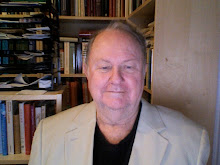During the first three lectures we examined a number of key theoretical issues, clearing away much ideological underbrush that had accumulated during the era when disparagement of the Middle Ages and its culture was de rigueur.
The present lecture concerns the first of our source eras. Lasting roughly from 200 to 600 CE, is is termed either Late Antiquity (emphasizing the continuity with what had gone before) or the Early Christian period, signaling its role the first act, so to speak, of medieval culture.
Prior to 1901, there was scarcely any acknowledgment that art had existed at all during the five centuries in question. In 1901 this situation was transformed by the appearance of major monographs by two Viennese art historians. Alois Riegl emphasized the evolutionary aspect, showing late antique are as part of chain running through the Middle Ages and lasting as long as Rembrandt. Jowef Strzygowski stressed the catalytic role of Middle Eastern traditions, erupting as it were into the calm waters of the Greco-Roman consensus. Strzygowski, who had a particular affinity with Armenia, ranks as a major precursor of the ethnic approach to culture. As Otto Brendel has shown, the perceptions of such innovative scholars drew implicitly on their awareness of contemporary avant-garde art.
The main part of the lecture followed a nonlinear approach, in order to isolate the major themes of late-antique art. The common thread linking these categories is their disregard of the norms established in fifth- and fourth-century Greece.
The portrait head of Decius (emp. 249-51), with its tormented features, exemplifies the category of EXPRESSIONISM. The portrait ascribed to Plotinus reflects the ascetic philosophical ideals of the period, which may be connected with certain tendencies towards physical attenuation found in the art of the time. The Eutropius portrait displayed a striking geometrical rearrangement of the standard features of the human head.
The category of SPHERICITY appeared in the smooth, rounded images of Theodosius and Theodora. The contrast of this category with the previous one exemplifies the complexity of late-antique art.
FLATNESS is pervasive in the period, as seen in several paintings and reliefs. An early example is the standing figure from the Synagogue at Dura Europos (before 256 CE). In some cases, as in mosaic of Justinian's court in S. Vitale, Ravenna, a "floating" effect was achieved.
Various GEOMETRICAL matrices ware essayed, including the frames on the domes of the catacombs and the astronomical diagram from the Synagouge of Beth Alpha. A particular form was the imago clipeata, in which a bust is framed by a roundel. The Jewish ossuary in the British Museum comes close to nonobjective art.
The asethetic of the SKETCH, in which a few strokes serve to suggest a more complex image, comes to the fore in the catacomb paintings.
PROPORTIONAL FLEXIBILITY appeares in images that seem to us too short (the icon of St. Menas) or too elongated (statue of Valentinian II).
The art of mosaic lends itself to a FACETED approach, as seen in two Ravennate monuments, the tomb of Galla Pacidia and S. Vitale (Theodora and her retinue).
STYLISTIC HETEROGENEITY appeared in the Mary icon from Mt. Sinai, where the front row of figures is in one style, the two angels in the middle distance in another. The Arch of Constantine (315), making use of spoils, is a more radical example.
Several works showed a deliberate disregard of the rules of perspective, some favoring REVERSE PERSPECTIVE.
SERIATION, the deployment of line-ups of nearly identical figures, appears in relief carvings (Arch of Constantine, again) and paintings.
The device of OVERALL PATTERNING emerged in the starry vaults of the Christian building at Dura Europos and the tomb of Galla Placidia.
Finally, BUBBLE ARCHITECTURE, greatly extending the premises of earlier Roman architecture, was seen in Santa Costanza, San Vitale, and Hagia Sophia in Constantinople.
The following lecture will document in extenso the parallels in modern art. By and large these are matters of a f f i n i t y, rather than "influence" as the term is usually understood. Yet there is a deeper connection, and that is that modernist vision in effect created late-antique art, something that prior to 1901 was not accepted as existing at all.
Wednesday, September 26, 2007
Subscribe to:
Post Comments (Atom)

No comments:
Post a Comment